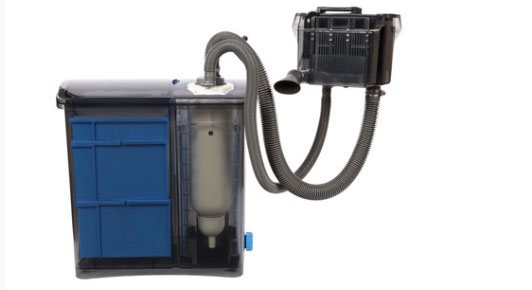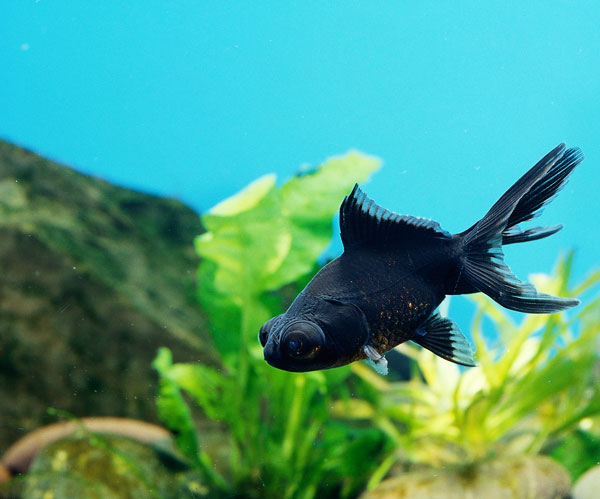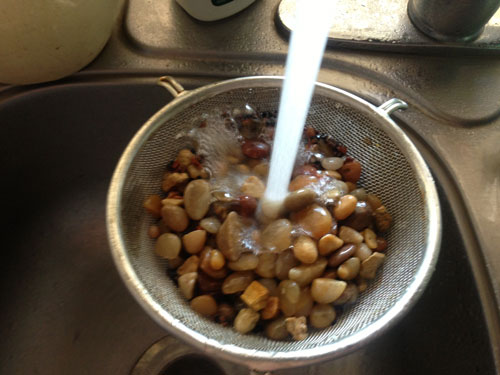
Q. I have a newly set-up 35-gallon saltwater aquarium with two 55-watt power compacts (blue and full spectrum) that are on about 10 hours a day, 20 pounds of live rock from another mature aquarium and 20 pounds of sugar-fine aragonite sand (not live). The pH is 8.2, specific gravity 1.023, and there's no detectable phosphate or nitrate/nitrite. I have a 3-inch coral beauty, a half-inch boxfish, a 2.5-inch shrimp (unknown species) that hangs upside down and is rarely ever seen, and various black "slugs" that were on the live rock.
I purchased and introduced a red bulb anemone after the aquarium was running for four weeks (it's now about 3 months old). It moved all around the aquarium and found a spot in the upper corner on the glass. After a week, I put in a small clownfish. They seemed to be right for one another. Then the anemone started moving around again. Now, it is on the opposite side in the lower corner, and its tentacles have all but withered into little stumps. It seems to have lost some of its color, as well as leaving some slime where it was on the glass. The clownfish is now ignoring it. What did I do wrong?
Darryl Nelson
Roseville, California
A. I wouldn't say you necessarily did anything "wrong," but you may have overestimated your system's ability to keep an anemone. In answering your question, I will assume that the "red bulb anemone" you identify is what is commonly called a rose anemone (Entacmaea quadricolor). The lighting you have works out to about 3 watts per gallon, which I think is on the low end of acceptable for keeping an anemone of this type. I would like to see it closer to 5 watts per gallon. The other aspect of keeping these animals is that they should be fed finely chopped shrimp, squid and fish two or three times a week. They will also eat flake foods, frozen black worms and krill, among other things. There is evidence to suggest that feeding can help offset lighting that may be insufficient. You did not mention whether you fed your anemone, so this may be one factor responsible for its condition.
Anemones sometimes arrive at the retailer in poor condition as a result of being kept in less than optimal conditions of lighting and water quality after they were collected. In such circumstances, it is not unusual for the anemone to lose a significant number of its symbiotic algal partners, the zooxanthellae. These algae supply the anemone with important nutrients, and when also not fed for several weeks or more, the anemone often arrives in a condition that does not allow it to cope very well with a brightly lit aquarium. So, they tend to seek out areas of lower illumination, such as the corners of the aquarium or behind the rockwork, to avoid being damaged by bright lighting. To rebuild their numbers of zooxanthellae, food needs to be provided; the addition of micronutrients, such as iron and manganese, to the water can also be helpful. Feeding foods rich in these micronutrients works, as well (e.g., black worms).
Your water chemistry parameters sound fine, but you should also measure alkalinity and calcium levels in addition to pH. You don't mention any filtration. Anemones need good water motion and water that is saturated in oxygen, especially at night. Overflows do a wonderful job of oxygenating the water as it cascades over the weir (a wall separating the aquarium from the drain pipe) and travels down to the sump. Some protein skimmer designs also help with gas exchange, as does an air stone dropped into the aquarium at night.
Keep a close eye on the other inhabitants of the aquarium, too. The coral beauty (Centropyge bispinosus) could be picking at the anemone, causing it to retract its tentacles. I am also concerned about the shrimp you mentioned. It may also be bothering the anemone, especially at night after the aquarium has been dark for a few hours. You might want to inspect the aquarium late at night with a small flashlight to see if anything may be picking at the anemone at that time. I have no idea what the black "slugs" are, but these may also be worth keeping an eye on.
Anemones are extremely delicate, and hobbyists should first have demonstrated success with other invertebrates such as some of the hardier soft and stony corals before attempting to keep symbiotic anemones and clownfish. Two publications on keeping anemones are worth acquiring: Dr. Ron Shimek's 2001 booklet Host Sea Anemone Secrets published by Marc Weiss Companies, Inc.; and Sprung and Delbeek's 1997 book The Reef Aquarium, Volume two, published by Two Little Fishies, Inc. Both are easily found either online or in retail aquarium stores.
 Aquarium Filtration Done Right
Today, keeping unique aquatic species is now commonplace tha
Aquarium Filtration Done Right
Today, keeping unique aquatic species is now commonplace tha
 Fish and Fungus
Black Moor Q. I have two large black moor goldfish, one larg
Fish and Fungus
Black Moor Q. I have two large black moor goldfish, one larg
 How to Get Rid of Cloudy Aquarium Water
Occasional cloudy water is an issue for nearly all aquarists
How to Get Rid of Cloudy Aquarium Water
Occasional cloudy water is an issue for nearly all aquarists
 Reefdoser Pro for iPad Ships
Reefdoser Pro for iPad Ships
 Useful Idea For Stronger Nutrition And Wellness
It truly does show when you take time to create a proper no
Useful Idea For Stronger Nutrition And Wellness
It truly does show when you take time to create a proper no
Copyright © 2005-2016 Pet Information All Rights Reserved
Contact us: www162date@outlook.com